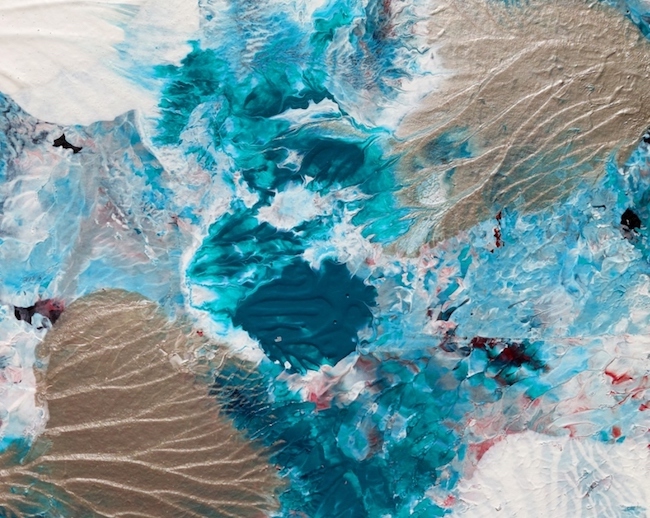Tra le tendenze dell’arte contemporanea vi è quella di abbandonare tutto il percorso di ricerca, di struttura e di analisi dettagliata della realtà circostante, che è base fondante di molti creativi per cui la mente ha bisogno di interagire o addirittura essere protagonista della realizzazione dell’opera, per dare priorità assoluta a quella manifestazione espressiva irrazionale e irrefrenabile di un mondo emotivo che sfugge a ogni tentativo di dialogo con la ragione, che fluisce liberamente senza alcuna regola stilistica se non quella dell’impulso creativo. L’artista di cui vi racconterò oggi invece sceglie da un lato il puro istinto, dall’altro però il suo gesto plastico parte dall’esigenza di spogliarsi da tutto ciò che è superfluo per andare a indagare su ciò che è primario e sostanziale.
Intorno alla metà degli anni Cinquanta del Novecento negli Stati Uniti un nutrito gruppo di artisti decise di far sentire la propria voce espressiva sovvertendo tutte le regole preesistenti, scegliendo pertanto di portare avanti un concetto nuovo nel quale la non forma non dovesse più essere legata soltanto alla sperimentazione logica, alla connessione razionale e all’evidenza della supremazia del gesto plastico non solo su qualsiasi riferimento con la realtà osservata ma anche su un mondo interiore e soggettivo che non doveva né trasparire né permeare l’opera d’arte; l’Espressionismo Astratto al contrario affermò con forza la necessità di tornare alle profondità del sentire, a quella comunicazione necessaria all’artista a liberare il sé altrimenti taciuto, l’unico in grado di raggiungere l’osservatore e coinvolgerlo, a volte persino travolgendolo, in quella propagazione completamente emozionale. Ciò che nel movimento contava più di ogni altra regola era la libertà di scegliere un linguaggio espressivo che fosse affine alla personalità e ai moti interiori degli esecutori dell’opera, gli stessi che, a dispetto delle profonde differenze riuscirono a essere coesi e uniti nel portare avanti il percorso malgrado gli iniziali rifiuti ricevuti dal mondo dell’arte accademico di quel tempo. Jackson Pollock, più esuberante e mattatore nella scena artistica newyorkese, scelse l’Action Painting attraverso la quale dar vita alle sue opere impulsive, concitate sia nell’esecuzione che nel risultato visivo finale, mescolando la performance alla realizzazione della tela in cui l’irruenza e la frenesia creativa fuoriuscivano generando un mondo confuso, variopinto e irregolare; Ad Reinhardt invece concepiva l’arte come momento di meditazione, di connessione con una capacità di osservazione che considerava molto più complessa di quanto normalmente recepito dunque le sue tele, spesso quasi monocrome, richiedevano un profondo sguardo per riuscire a coglierne il senso mistico, quasi spirituale, che poteva essere dedotto solo dal singolo, senza essere permeate dall’indicazione da parte dell’artista nemmeno attraverso il titolo. E ancora il Color stain painting di Elen Frankenthaler, pur sottolineando un approccio positivo e sereno nei confronti della vita, lasciava alla casualità, alle energie incontrollabili la generazione di un’immagine affidata alla diluizione del colore acrilico che si posava in modo naturale e spontaneo sulla tela, infondendo nell’osservatore un senso di contemplazione rapita nei confronti di quel mondo variopinto e indefinito quanto accattivante. In Europa, uno dei maggiori esponenti dell’Espressionismo Astratto ancora vivente, nonché uno dei più quotati artisti del mondo, è Gerard Richter nelle cui tele si mescola una fase più meditativa, quella con cui l’artista stende il colore dando vita all’opera e poi una fase più impulsiva con cui attraverso l’azione agisce quasi cancellando con il pennello ciò che è sottostante.
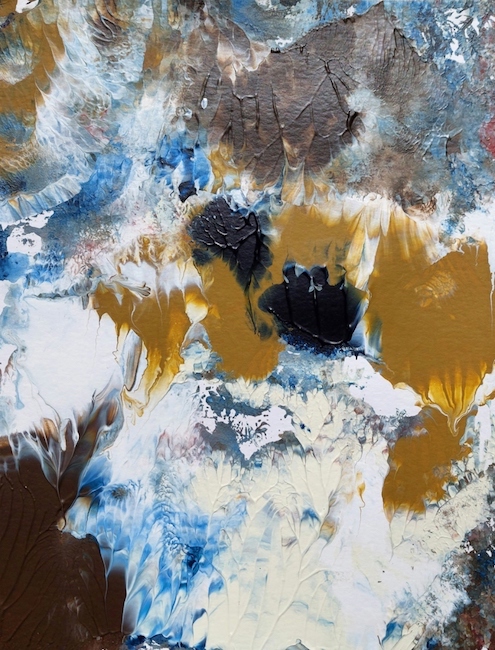
L’artista austriaco Thomas Christian Koller opta per il medesimo percorso creativo, quella della libertà stilistica associata al lasciar fluire le proprie sensazioni che nel suo caso si ampliano per uscire dal soggettivismo abbracciando un senso più universale del sentire emozionale, uscendo da se stesso per concedere alle opere di prendere vita propria, di permettere loro di parlare all’osservatore attraverso le tonalità e l’accostamento cromatico volto a coinvolgere e suscitare sensazioni attraverso la vibrazione di quelle corde interiori che si muovono inspiegabilmente proprio in virtù di quel variopinto indefinito che può assumere significati e concetti diversi a seconda della natura, del vissuto e del percepito dell’osservante.
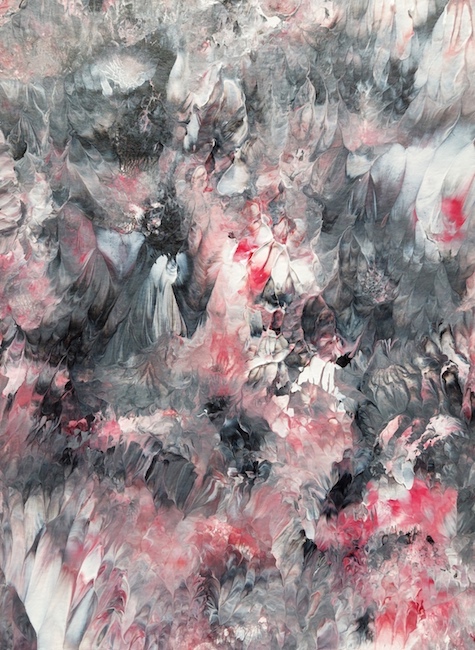
Tanto impulsivo appare il risultato finale quanto in realtà meditata è la spinta creativa, quella cioè di tendere verso la scoperta dell’essenzialità, di allontanare tutto ciò che è superfluo per raggiungere una dimensione in cui pochi elementi siano in grado di esprimere tutto, il pensiero, l’emozione, il concetto, che non hanno bisogno di troppi dettagli, di molti componenti per riuscire a liberarsi. Il punto di vista di Koller si estende anche alla vita contemporanea, a quella corsa costante a riempirsi di oggetti da possedere dimenticandosi che per essere felici e sentirsi appagati è sufficiente molto meno di quanto si immagini, dunque l’esortazione che compie attraverso il suo linguaggio pittorico è quella di andare dritti alla sostanza, di guardarsi dentro e di effettuare un cammino di autoconsapevolezza, di analisi interiore a seguito della quale porsi in ascolto di tutto ciò che normalmente viene silenziato dalla società consumistica e alienante che ruota intorno all’essere umano di questo secolo.
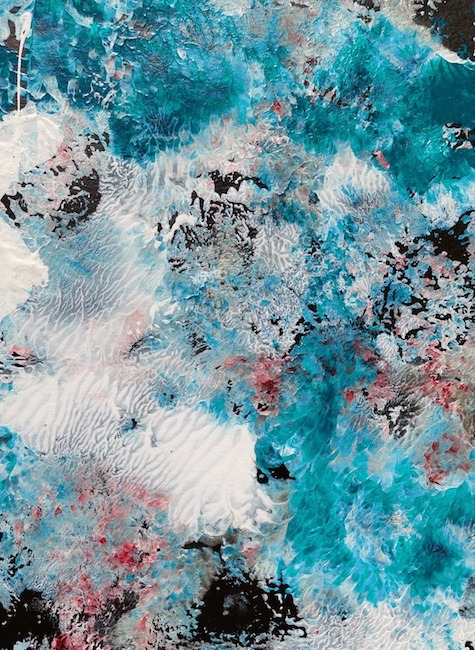
Rispetto alla produzione precedente di Thomas Christian Koller, la nuova serie di opere scopre le tonalità chiare, luminose, a volte forti altre più sfumate, come se il precedente approccio introspettivo necessitante di atmosfere più fumose e terrene per agevolare il raccoglimento in se stesso fosse stato superato da un’inedita consapevolezza, quella cosciente delle proprie fragilità e debolezze grazie a cui è possibile generare una nuova base da cui partire.
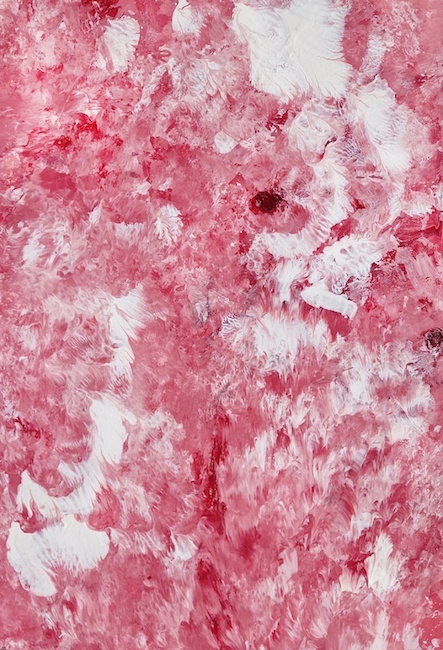
Ciò che emerge in modo molto evidente è la presenza costante del colore bianco che rappresenta la luce, la luminosità di cui l’uomo e lo sguardo hanno bisogno per captare con maggiore attenzione tutto ciò che c’è intorno e che spesso viene messo in ombra dalla ripetitività della quotidianità; d’altro canto però il colore neutro serve anche a definire il vuoto che si alterna al pieno della densità cromatica subito adiacente, quello spazio che sembra essere la pausa tra gli accadimenti, l’importante momento di immobilità funzionale a cogliere con maggiore attenzione la vivacità di ciò che è accaduto prima e che accadrà subito dopo quella pausa.
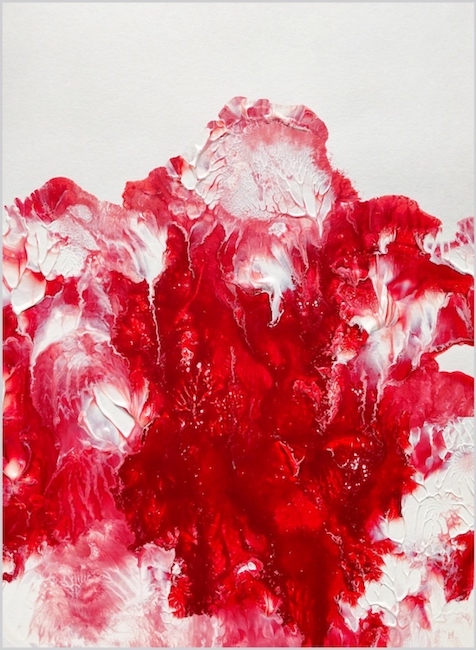
Dunque il colore diviene linguaggio che si dispiega sulla tela sotto forma di gesto plastico ma anche di costruzione, attraverso la stratificazione, di un’immagine finale che appare piena di sfumature come se fossero segreti sussurrati che inevitabilmente appartengono alla vita di ciascuno e che contribuiscono a strutturare la personalità; eppure, sembra suggerire Thomas Christian Koller, malgrado l’apparenza spesso negativa degli accadimenti, in realtà è sufficiente cambiare il proprio punto di osservazione e tutto può modificarsi assumendo connotazioni positive che non si sarebbero potute evidenziare rimanendo fermi nell’impostazione iniziale; parla di elasticità la nuova produzione dell’artista, di capacità sorridente di accogliere le circostanze e di considerare degli eventi come spunto di crescita, di evoluzione ma soprattutto di semplicità, di riuscire a comprendere che non tutto ha bisogno di essere ombroso o complesso per avere una reale consistenza.
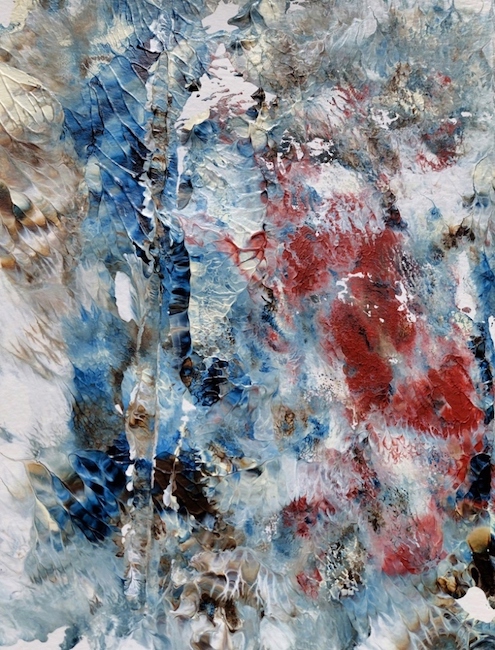
Al contrario il lato più piacevole della vita emerge in particolar modo attraverso quel percorso di esfoliazione, di riduzione verso l’essenziale che in qualche modo appartiene a un’età più matura durante la quale si comprende l’importanza dell’equilibrio, del bilanciamento interiore che può fuoriuscire solo a seguito di una profonda analisi e di una seguente serenità in grado di fare la differenza in una quotidianità solo apparentemente complessa o inquinata da false certezze che distolgono l’attenzione da ciò che invece è strutturale dell’essere umano e dunque, solo in quel caso, irrinunciabile.
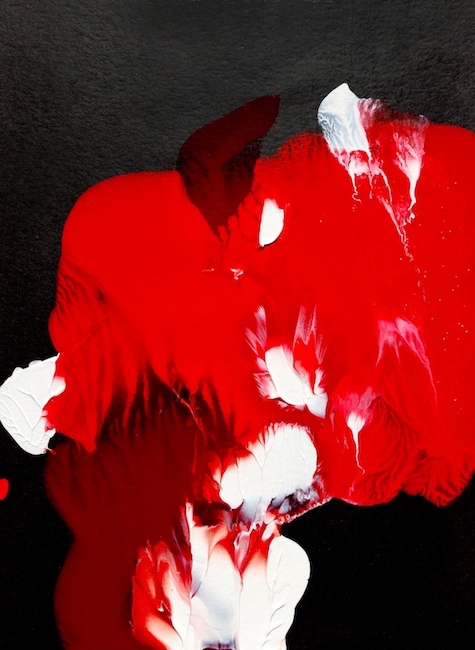
La gamma cromatica di Koller passa dall’intenso rosso in contrasto con il nero, alle sfumature di rosa, alla scala di grigi passando per i celesti e gli ocra, tutti accompagnati dall’immancabile bianco. Thomas Christian Koller, pittore e fotografo, ha al suo attivo la partecipazione a numerose mostre collettive in Austria ma anche in Italia ricevendo premi e menzioni e le sue opere sono state pubblicate in molte riviste del settore.
THOMAS CHRISTIAN KOLLER-CONTATTI
Email: foto-koller@gmx.at
Sito web: https://www.thomas-koller.com/
Facebook: https://www.facebook.com/profile.php?id=100016481502291
The search for the essential in Thomas Christian Koller’s Abstract Expressionism, between stratifications and alternation of empty and full spaces
Among the trends in contemporary art is that of abandoning all research, structure and detailed analysis of the surrounding reality, which is the founding basis of many creatives for whom the mind needs to interact or even be the protagonist in the realisation of the artwork, in order to give absolute priority to that irrational and irrepressible expressive manifestation of an emotional world that eludes any attempt at dialogue with reason, that flows freely without any stylistic rules other than that of the creative impulse. The artist I am going to tell you about today, instead, chooses on the one hand pure instinct, on the othes his plastic gesture starts from the need to strip away all that is superfluous in order to investigate what is primary and substantial.
Around the mid-1950s in the United States, a large group of artists decided to make their expressive voice heard by subverting all pre-existing rules, thus choosing to pursue a new concept in which non-form should no longer be tied only to logical experimentation, rational connection and the evidence of the supremacy of the plastic gesture not only over any reference to observed reality but also to an inner and subjective world that should neither transpire nor permeate the artwork; Abstract Expressionism, on the contrary, strongly affirmed the need to return to the depths of feeling, to that communication necessary for the artist to free the otherwise silent self, the only one capable of reaching the observer and involving him, sometimes even overwhelming him, in that completely emotional propagation. What counted more than any other rule in the movement was the freedom to choose an expressive language that was akin to the personality and inner motions of the executors of the artwork, the same ones who, in spite of their profound differences, managed to be cohesive and united in pursuing the path despite the initial rejections they received from the academic art world of the time. Jackson Pollock, the most exuberant and star performer in the New York art scene, chosed Action Painting through which to give life to his impulsive artworks, concussive both in execution and in the final visual result, mixing performance with the realisation of the canvas in which the impetuosity and creative frenzy spilled out, generating a confused, multicoloured and irregular world; Ad Reinhardt, on the other hand, conceived art as a moment of meditation, of connection with a capacity for observation that he considered much more complex than normally perceived, therefore his canvases, often almost monochrome, required a profound gaze to be able to grasp the mystical, almost spiritual sense that could only be deduced by the individual, without being permeated by the artist’s indication even through the title. And again, Elen Frankenthaler’s Colour stain painting, while emphasising a positive and serene approach to life, left to randomness, to uncontrollable energies the generation of an image entrusted to the dilution of acrylic colour that rested naturally and spontaneously on the canvas, instilling in the observer a sense of rapt contemplation towards that multicoloured and indefinite as well as captivating world. In Europe, one of the greatest exponents of Abstract Expressionism still living, as well as one of the world’s most highly regarded artists, is Gerard Richter in whose canvases is mixed a more meditative phase with which the artist spreads the colour giving life to the artwork, and then a more impulsive phase where through action he almost erases what is underneath with his brush.
The Austrian artist Thomas Christian Koller opts for the same creative path, that of stylistic freedom associated with letting his sensations flow, which in his case are broadened to break out of subjectivism and embrace a more universal sense of emotional feeling, stepping out of himself to allow the artworks to take on a life of their own, to allow them to speak to the observer through tones and chromatic combinations aimed at involving and arousing sensations through the vibration of those inner chords that move inexplicably precisely by virtue of that colourful indefinite that can take on different meanings and concepts depending on the nature, experience and perception of the observer. As impulsive as the final result appears, so meditated is the creative impetus, that is, to tend towards the discovery of essentiality, to remove all that is superfluous to reach a dimension in which a few elements are capable of expressing everything, the thought, the emotion, the concept, which do not need too many details, too many components to be able to break free. Koller’s point of view also extends to contemporary life, to that constant race to fill oneself with objects to possess, forgetting that in order to be happy and feel fulfilled, one needs much less than imagined. Therefore, the exhortation that he makes through his pictorial language is to go straight to the substance, to look inside oneself and to make a journey of self-awareness, of inner analysis, following which one can listen to all that is normally silenced by the consumerist and alienating society that revolves around the human being of this century. Compared to Thomas Christian Koller’s previous production, the new series of artworks discovers clear, luminous tones, sometimes strong and at others more nuanced, as if the previous introspective approach necessitating more smoky and earthy atmospheres to facilitate recollection within oneself had been overtaken by an unprecedented awareness, the consciousness of one’s own frailties and weaknesses thanks to which it is possible to generate a new base from which to start. What emerges very clearly is the constant presence of the colour white, which represents light, the luminosity that man and his gaze need in order to grasp with greater attention all that is around and that is often overshadowed by the repetitiveness of everyday life; on the other hand, however, neutral colour also serves to define the emptiness that alternates with the fullness of the immediately adjacent chromatic density, that space that seems to be the pause between events, the important moment of stillness functional to grasping with greater attention the liveliness of what has happened before and will happen immediately after that pause.
Thus, colour becomes a language that unfolds on the canvas in the form of a plastic gesture but also in the construction, through layering, of a final image that appears full of nuances as if they were whispered secrets that inevitably belong to each person’s life and contribute to structuring personality; and yet, as Thomas Christian Koller seems to suggest, despite the often negative appearance of events, in reality it is enough to change one’s point of observation and everything can be modified, taking on positive connotations that could not have been highlighted by remaining still in the initial setting; the artist’s new production speaks of elasticity, of a smiling capacity to accept circumstances and to consider events as a cue for growth, evolution, but above all of simplicity, of being able to understand that not everything needs to be shady or complex to have real consistency. On the contrary, the more pleasant side of life emerges in particular through that path of exfoliation, of reduction towards the essential that in some way belongs to a more mature age during which one understands the importance of balance, of the inner equilibrium that can only emerge following a profound analysis and a subsequent serenity capable of making the difference in an everyday life that is only apparently complex or polluted by false certainties that distract attention from what instead is structural in the human being and therefore, only then, indispensable. Koller’s chromatic range goes from intense red contrasting with black, to shades of pink, to the grey scale passing through light blues and ochres, all accompanied by the ever-present white. Thomas Christian Koller, painter and photographer, has participated in numerous group exhibitions in Austria but also in Italy, receiving prizes and mentions, and his artworks have been published in many magazines.


